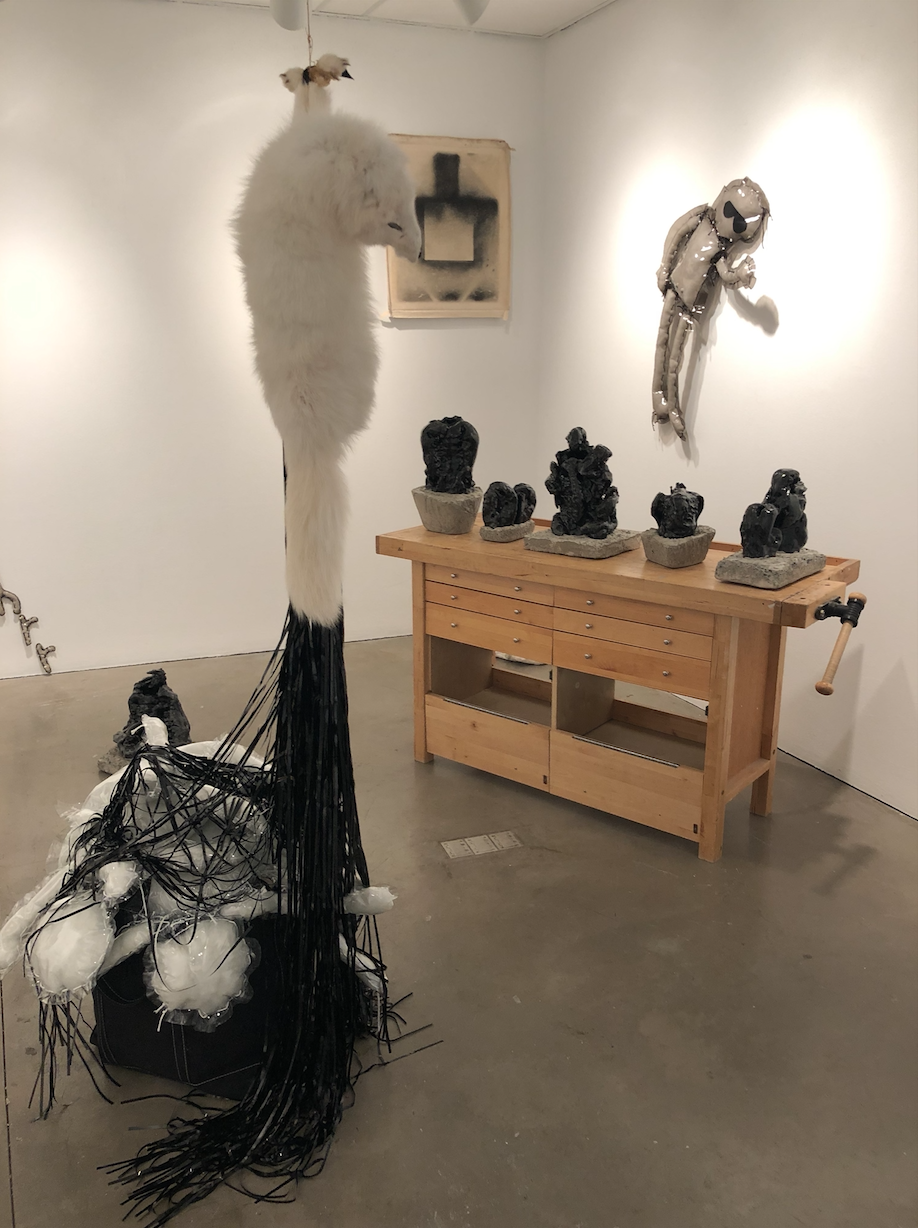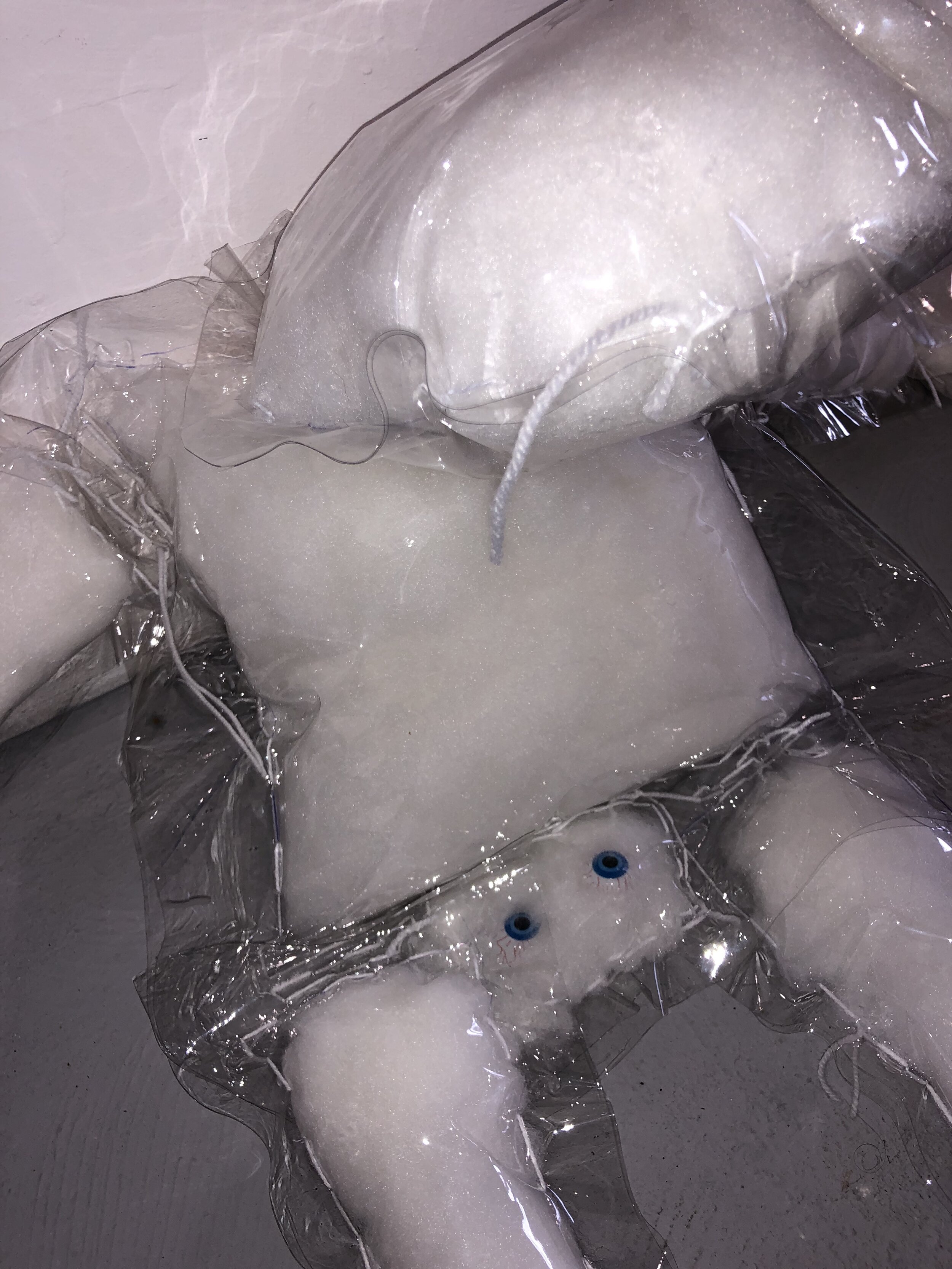







Franco Andres: Handbuilding
Point of Contact: July 12 - August 9, 2019
Until last year, Franco Andres hadn’t worked with clay. What began as a curios diversion has transformed into an obsession. Ceramics, both the material and the process of working with it, has had a significant impact on the way he thinks and makes work.
As members of the ceramic’s community will understand, handbuilding is an ancient pottery technique of creating forms without a pottery wheel. Artists use simple tools to pinch, coil, and make slabs of clay that ultimately become vessels. Andres latched on to the handbuilding technique and it became a way for him to think about the work that is necessary to build an individual’s identity. Through the material of clay, Andres was able to use handbuilding as a metaphor for the work that is required to construct our own gender identity.
Handbuilding is an interesting word. It is a gerund; a verb acting as a noun. A gerund performs a grammatical code switch by changing its typical category to perform a different syntactic function. In a more conventional sense, code switching is the process of shifting from one linguistic code to another, depending on the social context or conversational setting. It allows someone to choose a communication style based upon the person they are communicating with. This type of code switching is at the heart of Andres recent work.
All of the work in Andres installation is active and alive, as though it is in process. There is movement between materials, subjects, and artistic processes. There are no independent artworks. Like words in a poem, the artworks rely upon each other to create meaning. All of the different elements - from a self-portrait to abstract ceramic sculptures, a deconstructed tote bag, and photographs of a fluff-filled plastic carcass with a see-through body, along with a video projection of a man sculpting his body - are connected formally by Andres’ material sensibility and, together, create the atmosphere of his ruminations on the complicated process of forming one’s identity.
Time Changes Everything is an ambitions exhibition that brings together the work of four artists making very interesting and very different work. The artists have produced work using their own distinct visual language and, as a whole, the exhibition presents itself as a snapshot of our current time and place.
Context and experience are essential to understanding any particular moment in time. These are the two variables that make this intergenerational exhibition so intriguing. The different backgrounds and histories of each artist creates very different perspectives and explains why the prompt, “our present moment,” elicits vastly different responses from artist to artist.
Andres, the youngest artist included in the exhibition, contributes to this conversation using an ancient pottery technique as a metaphor. His work does not attempt to transcend the daily minutiae of our present moment for some loftier plane of existential contemplation. Rather, he makes us think more deeply about the lived realities, nuances, and responsibilities that accompany our current freedom to construct our own identity. This a chance to acknowledge the freedom we do (or don’t) have over our individual bodies and to bring attention to the paradox of how much work freedom requires. It is a daunting task to be an authentic individual and Andres work acknowledges how difficult it is for someone to do or be something different.
Below is a conversation between the artist and DJ Hellerman, Curator of Art & Programs at the Everson Museum of Art in Syracuse, NY.
DJ: Handbuilt or Handbuilding?
FA: Handbuilding? It’s more active.
DJ: Yes! Passive is when the subject receives the action. Active is when the subject performs the action. That’s what it’s about.
DJ: Can you tell me a little bit about the self-portrait you made for the exhibition?
FA: Allan Kaprow and Robert Morris fought about systems and ways of organizing the world...that feels especially relevant now. Institutions are being reevaluated and much of what we thought we knew appears upended. In some small way that all factors into the work. I kinda like those cheap pre-stretched canvases. They are so bad! I turned one around and used the bones as a stencil. Ripping the canvas off the frame revealed this portrait.
DJ: In the video, there is a passage of a sheep walking toward the camera. What is that about?
FA: I was an altar boy. A lot of that information creeps up in my work. That sheep...it creeps in.
DJ: The ceramic sculptures have lobster forms in them. Can you tell me a little about that?
FA: The Lobster-Gods address a Western philosophical concern for nature and the organism. They represent a microcosm of nature where they exist in, of, and between all things. Also...these things are super sexy.
DJ: The anatomical dolls are placed in such banal situations. Why?
FA: Routine tampers with the process of becoming. These banal situations...they represent a significant portion of many people's days. There's beauty there...a sort of exquisite misery...our own waste land.
DJ: Why are they so limp?
FA: They're not done. These vessels, they are limp because they are not yet full. They are limp because of their inherent potential.
DJ: Do you believe in human progress?
FA: I'm not sure.
DJ: Do you think time changes everything?
FA: Seems as though time impacts everything. The relationship between time and change...do they need one another? Maybe we just like to think they do.